For much of the South, the Tifton hybrid bermudagrasses top the list of forages that may be grown for hay or grazing. Properly managed, they are more dependable and produce more hay or animal product per acre at a lower cost per ton of hay or pound of beef or milk than most forages. They contain more dry matter when cut for hay (30 to 35%) and cure faster than other forages. Planted and managed properly, the hybrid bermudagrasses can become well established and provide grazing or hay in the first season.
1. Planting dates.
Dormant sprigs (crowns, corms, or rhizomes) of Tifton 85, Tifton 78, Tifton 44, and Coastal can be planted from December till March. They should be covered with 2 inches of soil to protect them from freezing. Delaying planting dormant rhizomes until February will reduce chances of winter kill. Delaying planting will also reduce winter weeds. Dormant plantings will not begin to grow until late March at Tifton.
Problems with dormant sprigs. Half or more of them may be dead. Live ones may not have enough reserves to establish a live plant. Our research indicates that maximum reserves can be obtained by not cutting well-fertilized grass after September 15. Leaving the last growth will help to keep the grass dormant during warm winter periods that make the sprigs produce tops that exhaust reserves when killed by a freeze. The number of plants from a gallon of digger dug sprigs planted 2 inches deep in a flat of soil kept moist in a warm place, may help estimate the bushels per acre needed to give a desired stand.
Sprigs with green tops and stolons of Tifton 85, Tifton 78, Tifton 44, and Coastal can be planted from March, when danger of a heavy freeze is past, until August. The earlier they can be planted, the longer they will have to get established and the better chance they will have to survive a severe winter. The underground corms or rhizomes so necessary for severe-winter-survival develop much slower than the above ground stolons. In a severe winter, many of the stolons will be killed and spring growth will have to come from the rhizomes.
Problems with sprigs with green tops and stolons. March and early April growth reduces the reserves in the sprigs. If they are planted erect so green leaves can manufacture reserves, they will usually live. If buried completely, they may not have enough reserves to emerge from the soil and will die. This can help explain reports of poor stands with March and early April plantings with automatic row planters that completely bury the sprigs.
Tops (green above ground stems) can be planted from June till August. The stems must have 6 or more nodes and should usually be about 2 feet long. At Tifton, a nursery with 100 lbs. of N + P&K will usually produce such tops by early June. Tifton 85, Tifton 78, Coastcross-1, Coastal, and Tifton 44 can be established from tops but Tifton 85 ranks first and Tifton 44 last in the success obtained with such planting.
Problems with tops. Tops must be planted in very moist soil before they wilt. Scattered on hot dry soil, they can die in a few minutes. Our 50-acre foundation nursery was successfully planted June 30, 1998 by fresh plowing and disking moist soil just ahead of planting. Tops from a one-tenth acre nursery fertilized with 100 lbs. of N in a 4-1-2 fertilizer March 15 were cut for the first time scattered from a truck and disked into the soil. They were in the moist soil in a few minutes after they were cut. The soil was packed immediately, driving a big tractor over it to help hold the moisture. It was sprayed with 2 lb/A of 2,4-D to keep weed seeds from germinating. It was sprayed again in 4 weeks. The field was not irrigated and little rain fell after the planting. By October 6, we had a perfect stand with grass over a foot tall.
2. Choose a well-drained soil free of bahiagrass, which can become a significant weed problem. Bermudagrass does not do well on wet land. Destroy common bermudagrass and perennial weeds by fallowing the soil in dry weather or spraying actively growing grass with glyphosate. October-November are usually the best months for fallowing.
3. Disk into the soil at least 500 lbs. per acre of a complete fertilizer such as a 5-10-15 and lime if needed ahead of planting. Use a soil test to determine more exact needs.
4. Plant only in moist soil that has an excellent moisture content to a depth of 2 or more feet. Moisture at this depth will be required if it fails to rain for several weeks after you plant.
5. Disk or turn the soil with a mold-board-plow and smooth with a disk-harrow to destroy germinating grass seeds the same day you plant. For best results, disk the soil just ahead of planting and pack the soil immediately after planting to help hold the soil moisture.
6. Plant pure sprigs of certified or registered planting material of the variety you want to grow.Buying from a grower of certified or registered planting material is your best guarantee.
7. Plant freshly harvested rhizomes, sprigs or tops from a well-fertilized nursery. Dormant rhizomes can be laid flat in a furrow and covered with 2 or 3 inches of soil. Sprigs and tops can best be planted with most of the material deep in soil with the green tips about 3 to 4 inches above the ground. Vegetable, tobacco, or tree planters can set plants in this way. Such plantings can also be had by pushing the basal part of the sprig into soft, well prepared soil and stepping on it to pack the soil after the stick is removed. A piece of 1/8 x 2 inch strap iron bolted to a 6-foot 1 x 2 to extend 6 inches beyond the 1 x 2 and notched at the end makes an excellent hand planter.
Mechanical planters require more sprigs per acre because they fail to set all sprigs properly. Broadcasting sprigs or tops by hand and pushing them into the soil with the disks on a tandem-harrow set nearly straight is a method used by many. With these planting methods, some live sprigs are planted upside down and never develop plants. At least 40 bushels of sprigs or tops should be planted per acre and better stands and quicker establishment will result if more are planted.
8. Pack the soil well with a heavy roller or by driving the tractor over the planting to establish the capillarity in the soil necessary to keep the soil moist around the sprigs. Irrigation will help but is not necessary if you do everything else right.
9. Spray immediately with 2 lbs./acre of 2,4-D or Simizine to control both grass and broadleafed weeds. 2,4-D is an excellent preemergent herbicide for both grass and broadleafed weeds if applied the same day the grass is planted. It will not kill grass seedlings. A second application will usually be required in 25 to 30 days.
10. It is important to complete steps 5 through 10 the same day to hold the soil moisture and control the weeds.
MANAGING THE HYBRID BERMUDAGRASS FOR HAY
Management determines the yield, quality, and cost of hay produced from alfalfa or any other species. This is especially true for the Tifton bermudagrasses. If cut only twice a year (a few farmers still do this) their "hay" will be fit for little more than bedding. Yet managed properly, these bermudas can make excellent low cost hay.
The following management program based on much research with Coastal bermudagrass will apply equally well to the other hybrid bermudas.
1. Use a calendar. There is a best time for every operation. Most of the following recommendations are based on years of research designed to determine the best time. To fail to carry out an operation at the best time will cut production efficiency and reduce your profits.
Burning bermudagrass sod too early in the spring will stimulate bermudagrass growth that may be killed by frost and will allow winter weeds to become established before the grass can compete with them. Burning in late March at Tifton will destroy green bermudagrass and reduce yields. Delaying the first spring application of fertilizer will cut yields. Failing to cut the grass at the proper age will reduce the digestibility and protein content making it necessary to buy and feed high priced concentrates to obtain animal gains that grass along could have given.
For an efficient bermudagrass hay production operation, circle important dates on your calendar and observe them. If you need 4-week old hay, number each hay field, record the date when cut and circle the day 4 weeks later when it must be cut again. Schedule your work so that these dates can be given top priority for the operation indicated and realize that failing to do so will cost you money.
2. Lime the soil if needed. Nitrogen fertilizers leave an acid residue in the soil. Theoretically, about 1000 lbs. of ground limestone will be required to neutralize the acid residue left by 600 lbs. of nitrogen from sources such as ammonium nitrate, anhydrous ammonia and urea. Nitrogen from ammonium sulfate requires three times as much lime. Bermudagrass grows best when the soil pH is from 5.0 to 7.0. Thus you should lime whenever soil tests show the pH to be below 5.0. Dolomitic lime is best because it supplies both magnesium and calcium (required for all plants) as it neutralizes the acid residue. It is best to spread lime in the winter to give it time to move into the soil and neutralize the acid residue.
3. Burn dead bermudagrass residue. Six years of research have shown that burning dead bermudagrass residue on sod at least 2 years old about March 1 at Tifton (one week before the last average killing frost):
a. Hastens spring growth and increases hay yields an average of one-half ton/A/yr.
b. Never reduces forage yields.
c. Destroys spittle bug eggs and controls this serious pest.
e. Helps control plant diseases.
f. Temporarily destroys urease, making it possible to apply urea nitrogen to the soil surface for up
to 2 weeks without its loss to the atmosphere as ammonia gas.
4. Control weeds. Well-fertilized Tifton bermudagrasses compete so well with weeds most of the season that weeds are only a problem in the first harvest. A good burn around March 1 may destroy weeds to the point that further control is not necessary. However, spraying with the amine salt of 2,4-D at a rate of 2 lbs/A soon after the burn and before summer annual grasses such as crab grass start to germinate will give good control of these grasses as well as broadleafed weeds. Grass seedlings cannot be killed with 2,4-D once they have emerged from the soil.
5. Fertilize hybrid bermudagrasses properly. The following information involving many years of research and experience with Coastal bermudagrass generally applies equally well to Tifton 44, Tifton 78 and Tifton 85.
Most coastal plain soils are very low in plant nutrients. Without fertilizer, Coastal bermuda will produce about 1.2 to 1.4 tons of hay and 180 pounds of protein per acre. With 600 pounds of N (nitrogen) per acre plus adequate amount of other nutrients, Coastal has produced 9 to 12 tons of hay and 2850 pounds of protein per acre (Table 1).
Table 1. Effect of nitrogen on the yield and protein content of Coastal bermuda at Tifton, GA
N
lb/A
|
Hay T/A cut every4 wks 6 wks
|
Protein cut every4 wks 6 wks
|
Protein
lb/A
|
0
100
300
640
|
1.2 1.4
4.4 5.7
7.9 9.7
9.7 12.0
|
9.2 7.6
11.2 7.8
15.2 11.3
17.0 13.8
|
180
800
1980
2850
|
P & K adequate 16% moisture hay
a. Nitrogen. Nitrogen, an essential component in protein is the fertilizer element that has the greatest effect on yield of hay and protein.
For 5 years, we compared six sources of nitrogen at rates of 100, 200, and 400 lbs. per acre applied to Coastal bermuda cut 4 times per year at about 6-week intervals. The average 5-year results from the 400 pound rate are summarized in Table 2.
Table 2. Five-year effect of nitrogen source (400 lbs/A/yr) on the yield and protein content of Coastal bermuda.
Source
|
Hay yield
ton/A
|
Protein
%
|
Protein
yield lb/A
|
Anhydrous ammonia
Ammonium nitrate (solid)
Ammonium nitrate (Solution)
Ammonium nitrate (urea solution)
Urea
Ammonium sulfate
|
10.3
10.2
10.1
9.4
7.9
9.5
|
12.0
10.8
10.7
10.6
9.6
11.4
|
2050
1837
1789
1662
1258
1810
|
Anhydrous ammonia, the first product of fertilizer nitrogen manufacture, will always be the cheapest source. Because anhydrous ammonia is adsorbed on soil particles, it resists leaching more than nitrate sources.
Rates of anhydrous ammonia that can be applied at one time depend on the base exchange capacity of the soil and its moisture content. We successfully applied 400 lbs. of nitrogen (N) per acre to a Tifton loamy sand by running the applicator feet 7 in. deep. At this rate, the ammonia spread 6 in. from the point of release to give a core of treated soil 12 in. in diameter. The ammonia killed the microorganisms in much of the core which kept them from converting the ammonia to nitrate nitrogen until they could slowly move back into the sterilized soil. This overcame leaching losses that could have occurred had the ammonia N been quickly converted to the nitrate form. We believe that up to 400 lbs. of N per acre can be applied at one time with negligible loss on most soils having the proper moisture content. This would permit one application in March to satisfy the annual requirements for bermudagrass hay production. It would reduce application costs where many now apply only 100 lbs. of N per acre at a time. It would also do a better job of destroying undesirable soil organisms. G. R. Pirrung, Bainbridge, Ga. reports that deep placement of anhydrous ammonia has greatly reduced the fire ants in his hay fields.
In all of our research, we were never able to overcome the lag in spring response to anhydrous applications. This lag reduced the yield of the first cutting of hay by 0.5 ton and was found to be due to the placement of the ammonia in rows 16" apart. Sand culture studies proved that Coastal bermuda can utilize ammonia nitrogen just as well as nitrate nitrogen. Many plants cannot. A broadcast application of 50 pounds of nitrate nitrogen by mid-March to make the nitrogen available to all new roots developing from the rhizomes should overcome this lag.
Surface applied urea nitrogen has been only about 80% as effective as ammonium nitrate pound per pound of N because the enzyme urease starts to break down urea to ammonia gas as soon as the urea comes in contact with the soil. The ammonia will be lost to the air until the urea moves into the soil by rainfall or irrigation. Our research proved that heat from the spring burn of Coastal bermuda temporarily destroyed the urease. Thus, urea can be surface applied for about two weeks after the spring burn without nitrogen loss to the air.
b. Potassium. Potassium (K), next to nitrogen, is the fertilizer element most lacking on the sandy soils of the Southeast. When potassium is deficient, Coastal develops tiny black or purple spots, its stand thins out, its yield is reduced and winter injury will be increased. Like most plants, Coastal will take up more K than it needs for optimum growth. Since this excess K has no nutritional value and does not increase the protein content of the grass, it is wasted. Keep this waste to a minimum by applying 2 pounds of K20 for every 4 lbs. of N, splitting the annual application, and keeping the soil potassium at low to medium levels by soil test. Applying a 4-1-2 (N-P205-K20) ratio fertilizer every time Coastal bermudagrass is fertilized will usually insure adequate potassium and avoid luxury consumption of this element where grazing returns K to the soil in urine and droppings. For hay production where no K is returned, we think a 4-1-3 will insure that the grass receives adequate K if no N is applied without K.
c. Phosphorus. Phosphorus is very deficient in virgin soils but may often be in fair supply in old cultivated fields. Phosphorus is important in animal nutrition and is less likely to be wasted due to luxury consumption. Much research has shown that 1 lb. of P205 for each 4 lbs. of nitrogen will generally meet the needs of the grass and the animals that consume it. Adding extra quantities of phosphorus will not increase protein, carotene, or xanthophyll content of the forage and some of the extra will be fixed in a form the grass cannot use.
d. Secondary elements, calcium, magnesium, and sulfur. Coastal bermuda has need for all of these elements. However, if super phosphate is used to supply the phosphorus needs of the grass, its calcium and sulfur requirements will also be satisfied. If not, substituting ammonium sulfate nitrogen for about 1/6 of the nitrogen applied should satisfy the sulfur needs of the grass. Liming with dolomitic limestone will satisfy Coastal's needs for calcium and magnesium.
e. Minor elements. Coastal bermudagrass has failed to give a significant response to minor elements applied to sandy soils in Georgia. Coastal bermuda is a strong feeder for these elements and will be able to satisfy its needs from the soil under most circumstances. Heavy fertilization that will remove 8 - 10 tons of hay annually will also remove minor elements and can eventually lower their soil levels to the point that they must be replaced with fertilizer.
f. Fertilize at the proper time. Coastal bermudagrass needs fertilizer as soon as spring growth begins. For maximum efficiency, make the 1st application about March 15 or 1 week after the last average 32E temperature. Fertilizer applied much earlier may be lost by leaching or feeding winter weeds. Apply about 1/4 of the annual fertilizer application March 15 and after the next 3 cuttings on about May 15, June 25, and Aug 1 to keep yields and protein content of each cutting more uniform.
a. Spittlebug. The adult spittlebug kills stems of bermuda by injecting a toxin as it sucks the juice from them. A heavy infestation of this insect can turn a bermuda field brown in less than a week. Under such circumstances, fire to remove the dead grass and destroy the adults is generally the best control. It is much better to prevent spittlebug damage, however, by destroying overwintering eggs on grass stems with fire on March 1 and preventing heavy accumulation of grass in the summer.
b. Armyworm. Effective control requires continued close watch to detect their presence before they get large enough to cause much loss. Cutting hay when armyworms are small is an effective and economical control method. If the grass is not tall enough to make hay, an insecticide such as Sevin may be used.
A 4-week cutting schedule on Coastal bermudagrass will reduce the likelihood of loss from either of these insects.
7. Cut Tifton bermudagrass on schedule. Study Table 3 to note how the interval between cuts affects both yield and quality. Note that annual yields are maximized with a 6-week cut. Delaying each cutting more than 6 weeks between cuts will reduce quality. In one feeding experiment, Coastal bermudagrass uniformly fertilized and cut at 4, 8, and 13-week intervals and artificially dried gave ADGs of 1.2, 0.9, and 0.0 pounds, respectively, when fed without supplement to young dairy heifers.
Table 3. Effect of cutting frequency on the yield and chemical composition of Coastal bermuda fertilized with 600 lbs/N/A/yr with adequate P&K.
Interval
between
cuttings
|
Annual average Yield* IVDMD Leaf
T/A % %
|
Protein % Yield
dry basis lbs/A
|
Crude
fiber
%
|
3 weeks
4 weeks
5 weeks
6 weeks
8 weeks
12 weeks
|
7.9 65.2 83
8.4 61.9 79
9.2 59.3 70
10.3 58.0 62
10.2 54.1 56
10.4 51.0 51
|
18.5 2442
16.4 2317
15.4 2329
13.3 2292
10.7 1898
9.0 1612
|
27.0
29.1
30.6
31.6
32.9
33.4
|
a. Take the 1st cut when the grass is about 18 in. tall and cut every 4 - 6 weeks thereafter.
b. Use the calendar to set the next cutting date and never let more than 6 weeks elapse between cuts.
c. When making hay, avoid rain if possible. Use a tedder after a rain to dry the hay as rapidly as possible. Grass hay will not lose its leaves from tedding. Legumes such as alfalfa will lose their highly nutritious leaves from tedding.
d. To maximize quality (IVDMD) with good yields, use Tifton 85, Coastcross-1 or Tifton 78 and cut them every 4 1/2 weeks as you would cut alfalfa. These grasses so managed should produce 8 1/2 tons of hay per acre per year with an average IVDMD of 67%. Tifton 85 should yield more.
8. Cut and Preserve Hay Well. For 3 years we studied the factors affecting the curing of 64 lots of Coastal bermuda hay. In this study, we found that drying rate was influenced by yield and water content of the grass when cut, solar radiation and dryness of the air (vapor pressure deficit). Dry matter yield, protein, and digestible dry matter decreased slightly in good curing weather and sharply in rainy weather. Although some samples reached 20% moisture content one day after cutting, most samples required two days. Weather records at Tifton, GA show chances of at least one period of two or more consecutive days without rain in any week are 40 to 50% in mid-summer and up to 70% in late spring and early fall. During June through September, chances of 5 to 10 consecutive days are 8 and 2%, respectively. If hay is rained on in the swath, fluffing it up with a tedder after the rain will hasten drying and reduce losses.
Because hay curing weather is limited in the Southeast, a farmer must be prepared to "make a lot of hay when the sun shines". Hay must be dry enough to keep without heating or molding before baling. Baled hay should be stored in a dry place under a shelter. Large round bales should be stored on crushed rock or on well drained soil if left exposed to the weather. Open storage will probably result in an average loss of at least 25% of large bale feed value.
9. Stand loss from unusual freezing temperatures that may occur north of US 80 can be reduced as follows:
a. Plant as early as possible and not later than July 1 in areas where winter temperatures below 0EF have been experienced.
b. Increase the quantity of sprigs planted per acre to give more deep-placed initial plants. Plants established later from the spreading stolons have less winterhardiness the first year because they fail to develop crowns and rhizomes below the soil surface.
c. Plant in soil fertilized with approximately 500 lbs. per acre of a complete fertilizer such as 5-10-15 and top-dress with 100 lbs. of nitrogen per acre as soon as runners start to develop in order to grow bigger, stronger plants before winter.
d. Control weeds by spraying with 2,4-D (2 lbs/acre) immediately after planting to give the new plants a better chance to grow before winter. Applications of 2,4-D at about monthly intervals will be necessary to give weed control until the ground is covered.
e. Be sure established plantings have adequate amounts of plant nutrients, particularly potassium.
f. Do not apply nitrogen after mid-August.
g. Do not cut for hay after September 15. When cut for hay in early fall, hybrid bermudagrasses exhaust their food reserves while initiating new growth, and may not have time to rebuild them before frost. This tendency to make new growth in fall and exhaust food reserves is stimulated by abundant nitrogen in the soil. Moderate, continuous grazing from spring to fall does not seem to increase winter injury.
h. Leave some stubble to give cold protection and particularly to keep plants dormant.
I. If poor stands result from winter kill or failure to get complete ground cover the year the grass is planted, remove the dead grass in mid-March, apply 300 to 400 lb/A of 24-6-12 and spray with 2 lb/A of 2,4-D. Your fertilizer blender can prepare the 24-6-12 with about 20% of the N from ammonium sulfate to supply as much sulfur as phosphorus.
j. Control spittle bug by burning off the stubble about 1 week before the average date of the last killing frost (about March 1 at Tifton, GA). Burn soon after a rain to reduce the injury to living plant parts at the soil surface. Burning earlier will stimulate early growth, exhaust food reserves, and make the plants susceptible to killing by a late winter freeze. If necessary, use insecticides to control late summer spittlebug and fall armyworm attacks













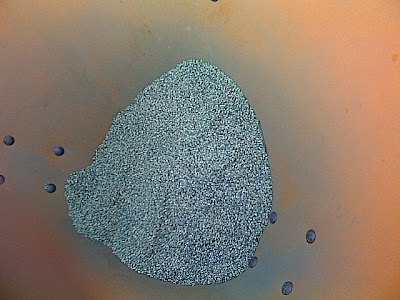
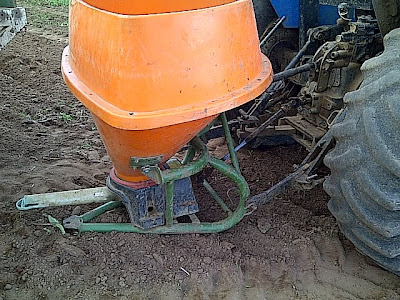
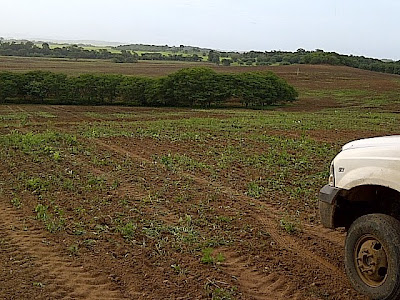


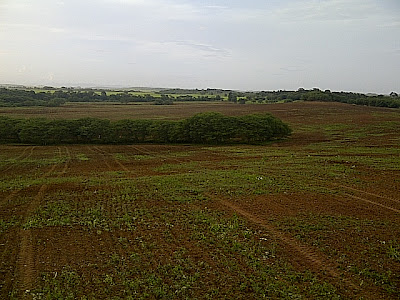












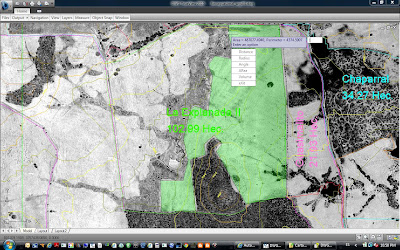



 Tifton 85 is the best of many F1 hybrids between PI 290884 from South Africa and Tifton 68, a highly digestible but cold susceptible hybrid that was released in 1983. Tifton 85 is a sterile pentaploid. Except for Tifton 68, it is taller, has larger stems, broader leaves and a darker green color than other bermudagrass hybrids. Tifton 85 has large rhizomes (though many fewer than Coastal and Tifton 44), crowns, and very large, rapidly spreading stolons.
Tifton 85 is the best of many F1 hybrids between PI 290884 from South Africa and Tifton 68, a highly digestible but cold susceptible hybrid that was released in 1983. Tifton 85 is a sterile pentaploid. Except for Tifton 68, it is taller, has larger stems, broader leaves and a darker green color than other bermudagrass hybrids. Tifton 85 has large rhizomes (though many fewer than Coastal and Tifton 44), crowns, and very large, rapidly spreading stolons.



